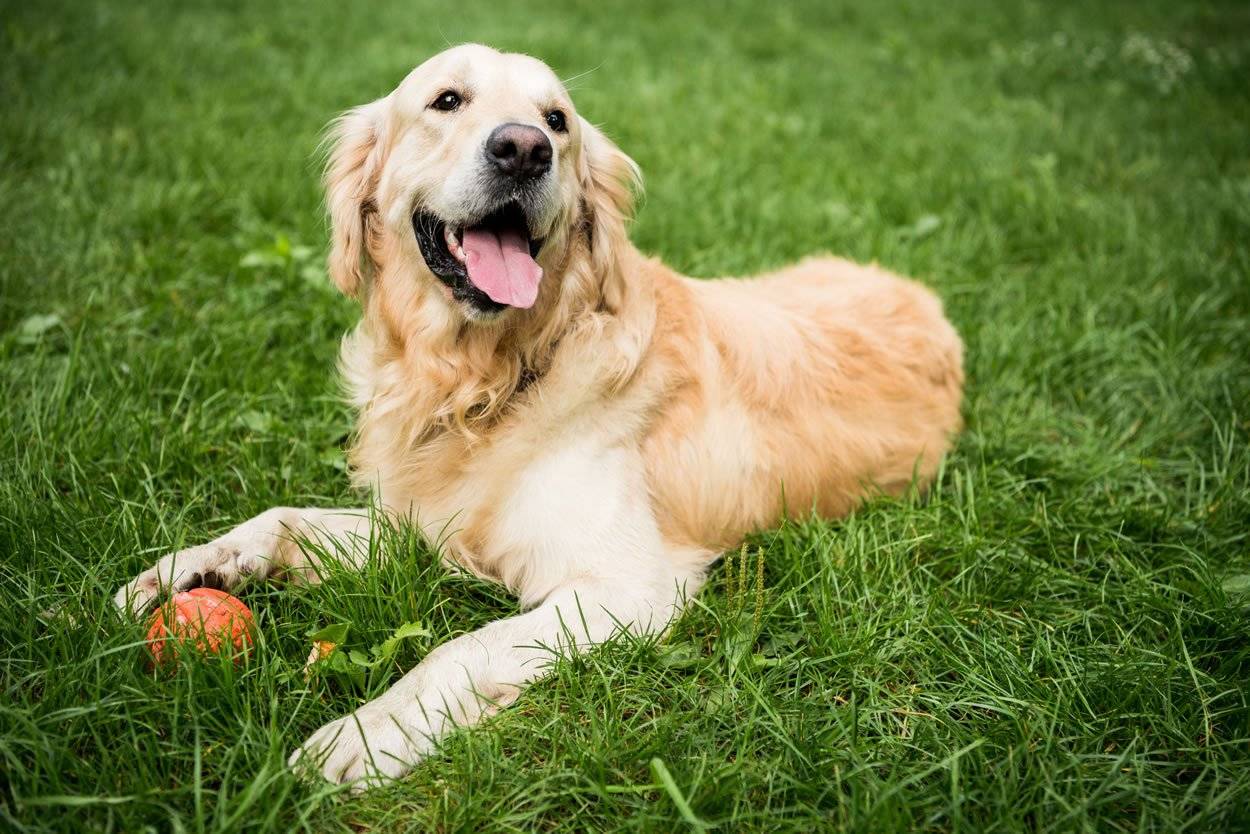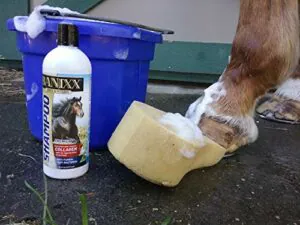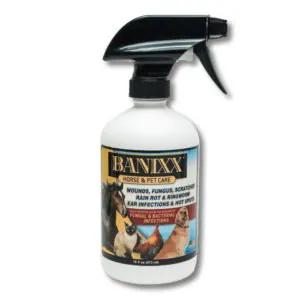Being a horse owner in a wet geographic area is tough. Not only do you have to be a diligent groomer, but you also have to prepare for complications that arise with increased moisture. One complication you may deal with is a skin infection known as rain rot (rain scald), and it can be a doozy.
So, to make it easier, we’ve broken down what rain rot is, what causes it, how to treat it, and how to prevent it in this short blog below.
So, before any storm clouds come to rain on our parade, let’s get into it!
Facts about rain rot in horses:
- Horse rain rot is an opportunistic bacterial infection that affects the outer, protective layer of horses’ skin and produces crusty scabs
- It is worse during the warm, humid months of the year, as that’s when the bacteria that causes rain rot, D. Congolensis, survives best
- Rain rot can be largely prevented through good hygiene, regular once-overs, and providing adequate shelter from moisture to your horse
What is rain rot on horses?
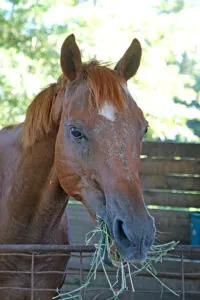
Rain rot is usually found on horse’s topline, but can also be found on the rump, legs and face.
Rain rot is the name for a bacterial infection of the epidermis which causes matted scabs containing hair clusters.
Also known as rain scald, can be found in horses of all ages, sexes, and breeds. However, younger horses, immunocompromised horses, horses with allergies that affect skin integrity, and horses with lighter coat colors are at a higher risk of developing rain rot.
Though these lesions are typically found on the horse’s topline, they can also be found on the rump, face, and legs.
What causes rain rot on horses?
Rain rot is a product of the bacteria Dermatophilus congolensis, a Gram-positive bacteria. Rain rot is usually observed most during warm, wet times of the year since spores in D. Congolensis require warm, moist climates to spread.
Horses who are blanketed during wet seasons tend to sweat more and offer an ideal environment (body warmth and wet surroundings) for D. Congolensis to grow. This is because tightly bound skin can’t easily secrete CO2. This sets up a scenario that allows the bacteria to germinate and produce hyphae which penetrate into the dermis before spreading further. Over time, this causes an acute inflammatory response which produces the characteristic scabs of rain rot.
However, it should be noted that rain rot can only be established through a preexisting break in the skin. That’s why the two most common means of transmission are rubbing against equipment that’s contaminated by another horse and being bitten by infected insects.
Symptoms of rain rot on horses
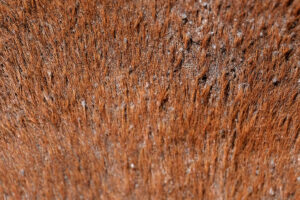
Rain scald begins as small, pinpoint lesions that can become quite large and affect multiple layers of skin.
It begins presenting with small, pinpoint lesions that can easily be missed particularly if your horse has a long (winter) coat. Eventually these lesions coalesce into tufts of “paintbrush” shaped hair that are raised from the skin. If left untreated, these tufts of missing hair give rise to keratinized, wart-like scabs or crusts. In advanced cases a thick, yellow-green pus can be seen beneath the scabs.
In particularly severe cases, these lesions and scabs can become quite large and affect multiple layers of skin. If the infection progresses to this point, it can negatively impact your horse’s use for multiple months while the infection clears. If the infection is allowed to affect the lower limbs, similar scabby lesions will be found on the pastern and fetlock
The visibility of rain rot makes it relatively easy for equine veterinarians to diagnose. Not only are the lesions heavily visible, but the skin around them is also slightly painful and warm to the touch. This makes it easy for veterinarians to simply run their hands around the affected site and see how the horse reacts. If they flinch from discomfort and there are noticeable lesions, the veterinarian will likely make a presumptive diagnosis.
How to treat rain rot on horses
Proper treatment of rain rot is dictated by the severity of the infection. If your horse has a mild case of rain rot, they will likely heal with just a bit of extra attention.
Simply bathing your horse with anti-microbial soap can be very effective at removing the scabs and eliminating the D. Congolensis bacteria. However, the antimicrobial shampoo for rain rot should contain some amount of chlorhexidine, povidone-iodine, or benzoyl peroxide. These are three of the most effective antimicrobial compounds available in commercial-grade anti-bacterial topicals.
Also, remember that contact time is very important for allowing antimicrobial solutions to work. You should leave any medicated shampoo soak for at least ten minutes on the affected areas before rinsing it off. Once rinsed off, the skin should be allowed to dry completely before applying any topical solution. Treatment of choice at this point is a potent yet gentle antimicrobial solution such as Banixx Horse & Pet Care spray that has no burn upon application and no foreign scent to alarm your horse. Because the spray is so easy to use, its easy to be consistent with application.. Spray am and pm until you start to see results, but note that new hair growth is extremely fine and tough to see with the naked eye in its early stages. So..be patient.
What if my horse has a severe case
However, all of this advice becomes moot if the affected horse has a particularly severe case of rain rot. In these cases, your equine veterinarian may take a skin biopsy of the affected area to ensure it is afflicted by rain rot and not another infection. If rain rot is determined to be the culprit, the affected horse may require a regimen of strong, oral antibiotics to clear the infection.

If your horse has a severe case, your equine veterinarian may take a skin biopsy of the affected area to ensure it is afflicted by rain rot and not another infection.
In any case, horses with rain scald must be isolated away from other horses to prevent spreading the infection. Additionally, any scabs that are removed must be immediately thrown in the trash to prevent creating a source of reinfection. To that same end, be sure that the affected horse has his own grooming equipment and blankets. Disinfect and replace any contaminated equipment or grooming tools to help prevent spread. It’s not a bad idea to wash your horse’s blankets or sheets regularly also to keep infection rate low.
This last piece of advice touches on a very important point: D. Congolensis can spread to humans. With that in mind, please remember to always wear gloves when dealing with a horse with rain rot to keep you and your family safe.
What happens if you don’t treat rain rot
Although it is an infection that tends to resolve on its own, horse owners should not delay in treating rain rot. If left untreated, the scabs can become sites where secondary infections breed; notably, staph infections and strep. Unfortunately, both of these infections are noticeably harder to treat, cost more to treat and many times more dangerous than rain rot.
How to prevent rain rot on horses
Thankfully, it is relatively easy to prevent rain rot in horses by taking a few simple steps.
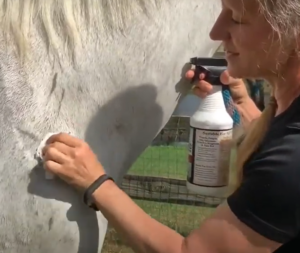
The best prevention is to practice good horse hygiene.
First, and most important, practice good horse hygiene. A solid, regular groom job on your horse is one of the best ways to avert rain scald. Of course, baths work well…but that just depends on your geographic area and farm or boarding circumstances. Good hygiene also means disinfecting and sterilizing all non-disposable equipment regularly. Remove manure and bedding from stables. Thoroughly wash all cloths, rags, or towels. And don’t forget those saddle pads!
You’ll also want to bake it into your routine to do a once-over of your horse’s entire body each day. You want to make sure there are no signs of cuts, swelling, injuries, or matted hair. If your horse has been exposed to lots of moisture recently, be sure to scrape off excess mud on their legs and barrel.
Along those same lines, try and limit your horse’s access to mud in their pasture as much as you can. Mud can get caked on your horse’s hair and skin which can open the door to infections later. Also, watch the populations of biting insects around your horses’ environment. If there’s been a population spike, consider using insect repellant to decrease your horses’ urges to scratch at bites. This will lessen the chance of your horse creating skin abrasions that provide D. Congolensis a safe place to live.
Give your horse some cover
It’s a good idea to make a plan that ensures your horse has adequate shelter in the field. That way they can easily access protection in the event of rain. Even things like trees or tall hedges can help reduce the incidence of overly wet skin and prevent infection.
Additionally, don’t over blanket your horse during the wet season. While blanketing your horse can provide protection from excess moisture, it can also be a double-edged sword. Over-blanketing your horse can actually trap moisture and lead to micro abrasions which are ripe for infection. If you plan on blanketing for the outside, waterproof your blanket. Follow the manufacturer’s specifications and let it dry after each use.
However, if you do all of this and you find that your horse has developed rain rot, don’t fret. Reach for Banixx! Banixx is clinically-proven to provide fast-acting, sting- and odor-free relief. Best of all, it achieves this without relying on pesky antibiotics or steroids! Simply identify the skin affected by it. Apply Banixx twice per day, Within a few days your horse’s skin should begin healing. With Banixx, relief really is that simple.
To learn more about rain rot, see rain rot pictures and read real life case studies, visit our regular web page on rain rot.
In the meantime, we hope you’ll continue to visit our blog to learn more ways to keep your horse happy and healthy!
Sources:
https://extension.psu.edu/rain-rot-in-horses
https://thehorse.com/180660/dealing-with-rain-rot-in-horses/
https://www.bhs.org.uk/horse-care-and-welfare/health-care-management/horse-health/equine-diseases/rain-scald/#:~:text=Treatment,Hibiscrub%20and%20then%20gently%20dried
Share this Post
Featured Post
Recent Posts
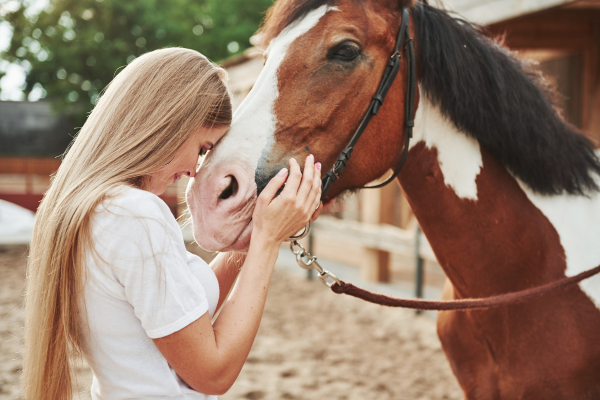
EPM…it’s not The End like it used to be–successful treatments are underway!
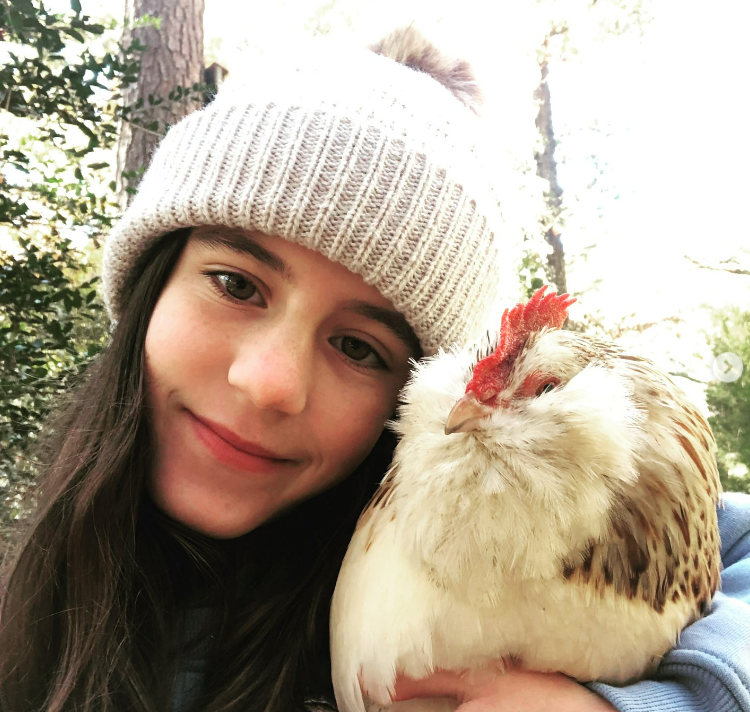
Chicken Wound Care: How to Treat an Open Wound on a Chicken?
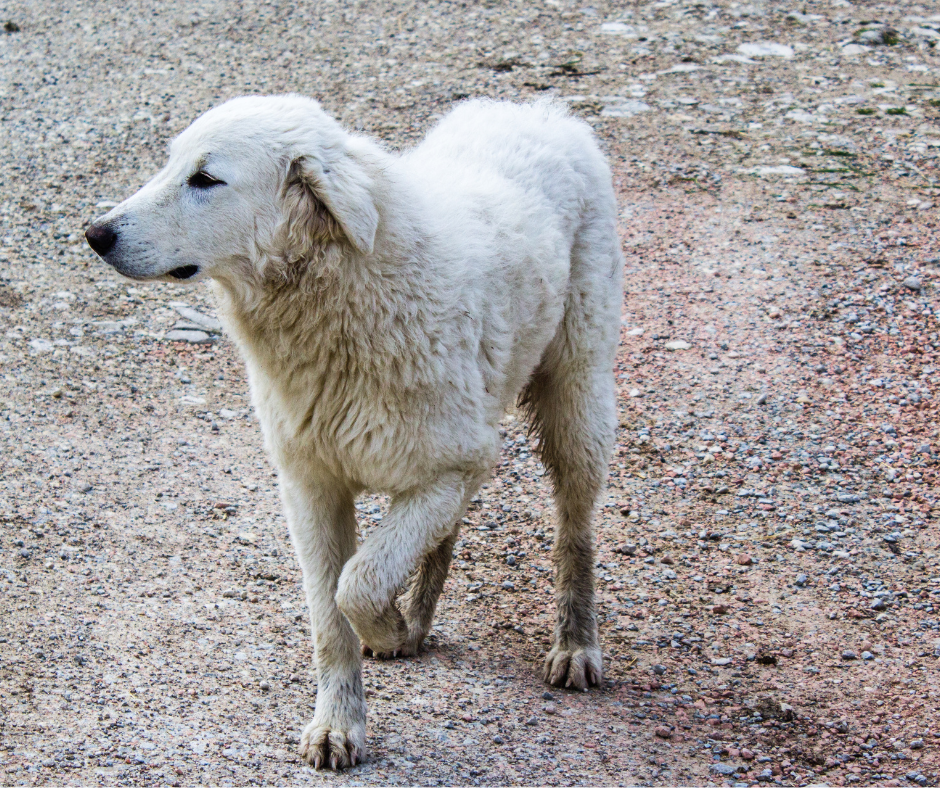
Oh no! my Dog is Limping…get these useful facts to sort it out!
Why is my Cat peeing everywhere? all the time? All you need to Know about Feline Idiopathic Cystitis
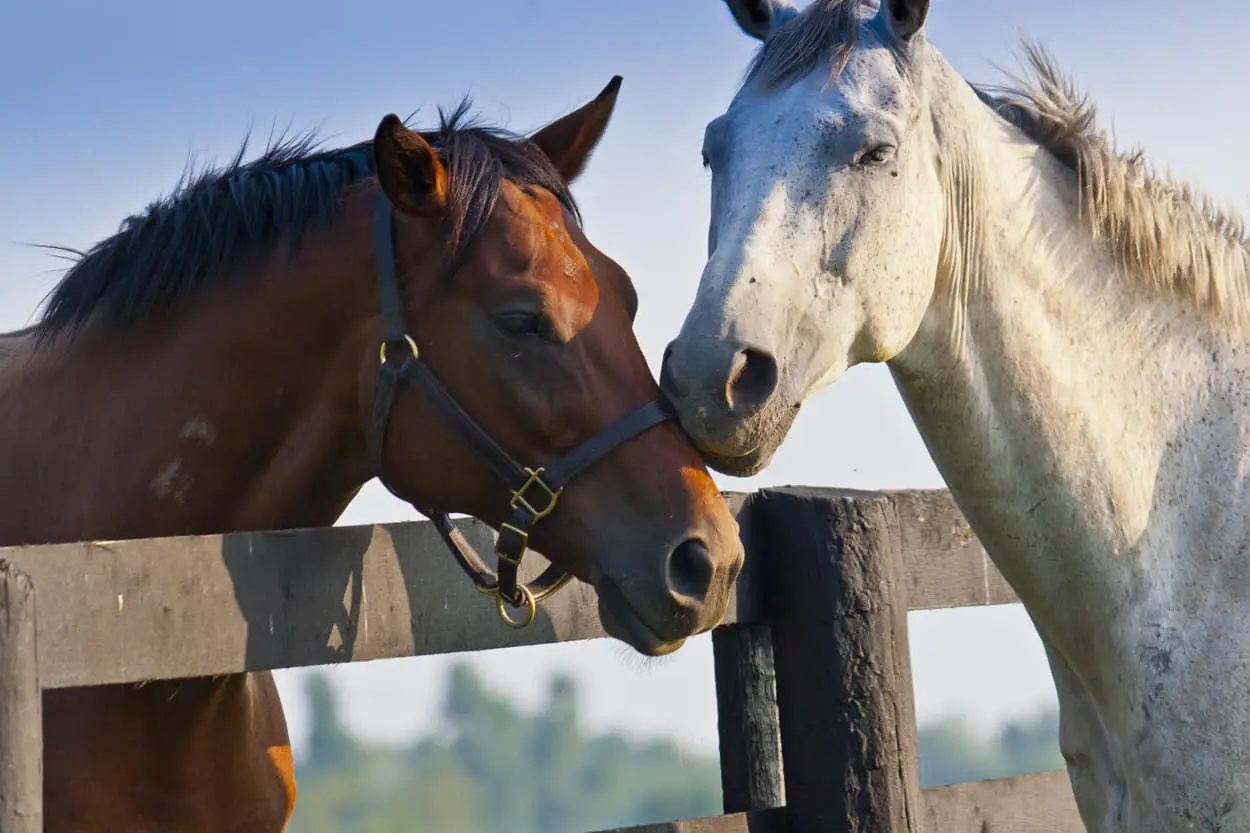
Do horse coat colors affect their behavior?
